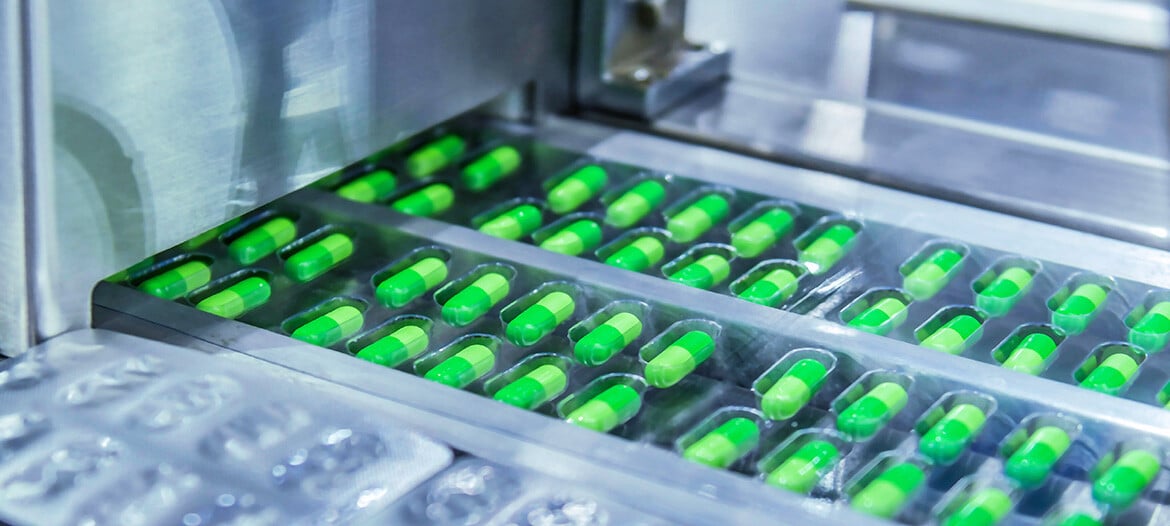BioPharma Outlook: Trends Driving Sustainability in Pharma Cold Chain

Amardeep S. Chahal
Senior Vice President - Global Marketing, Strategy & Corporate Development, Cold Chain Technologies
Climate change is an existential threat that can affect the entire planet. The pharmaceutical industry, a cornerstone of global healthcare, faces mounting challenges in managing its environmental impact. With healthcare activities contributing 4.4% of total global emissions, and the industry's carbon footprint projected to triple by 2050, thoughtful action is necessary[1]. The industry's carbon intensity, which outpaces even the automotive sector, necessitates systemic changes in production, distribution, and packaging[2]. Climate change is projected to cause an additional 250,000 deaths every year between 2030 and 2050 from malnutrition, malaria, diarrhea and heat stress.
The challenge
According to one recent publication, more than 48 tons of CO₂ equivalent are produced for every $1 million generated by the pharmaceutical industry[2]. Additionally, the sector generates 300 million tons of plastic waste annually, a large amount of it resulting from single-use packaging and devices[3]. With only 5% of U.S. plastic waste recycled in 2021, recyclability alone is not a sustainable solution[4]. Furthermore, 85 percent of healthcare-related waste is non-hazardous, presenting opportunities for eco-friendly alternatives[5].
How to combat climate change
The World Economic Forum[6] offers six suggestions for how the pharmaceutical/life sciences industry could reduce its overall climate impact. Many of these suggestions are directly applicable to cold supply chains, and offer valuable opportunities for suppliers—working in close partnership with their pharma/life sciences clients—to help make a meaningful impact.
- Invest in research and development (R&D) activities: to fight emerging infectious diseases that spread faster and further in a warming world.
- Invest in R&D to ensure of the integrity of medicines: including the development of heat-stable products for hot environments and innovations that simplify packaging and streamline transportation to reduce spoiled or wasted inventory and reduce redundant shipments.
- Expand access to healthcare products globally: so people hardest hit by health and climate get equitable access.
- Reduce greenhouse gas emissions: from manufacturing, operations and facilities using state-of-the-art engineering controls, greener fuel sources, reduced use of single-use products and more.
- Ensure all third-party partners meet high sustainability standards: suppliers, distributors, contract manufacturers and more must work together to reduce emissions and waste at scale.
- Innovate on renewable energy: in worldwide operations and transportation, using electric sources wherever possible.
The opportunity for change
By leveraging innovation and ongoing technological advances, stakeholders throughout the pharma cold chain can become leaders in sustainable practices. Key strategies that are already being embraced include broadening the industry-wide use of:
1. Reusable packaging solutions:
Recent advances in reusable packaging systems that are durable, reliable, high-performance, robust and cost-effective, significantly reduce waste and emissions by reducing the volume of single-use packaging materials that end up in landfills. One example is the EcoFlex reusable shipper by Cold Chain Technologies (CCT), which reduces fossil fuel use by 60 percent and greenhouse gas emissions by 48 percent compared to conventional disposable packaging, according to the manufacturer. Broader use of reusable cold chain shipping containers throughout the healthcare sector can also help to divert enormous volumes of landfill waste. To date, CCT has shipped more than four million of these reusable shippers, preventing more than 80 million pounds of landfill waste.
2. Recyclable packaging innovations:
Emphasizing the lifecycle perspective, recyclable packaging options must consider the impact of different source materials, and how readily they can be recycled. Materials such as cellulose, which can be recycled into new products, score higher on sustainability scales (full life cycle from cradle to grave) than non-recyclable options such as expanded polystyrene foam (EPS) or polyurethane and other options such as bio-EPS, cotton and starch-based options.
3. Digital solutions to minimize waste:
Temperature excursions cause an estimated $50 billion in annual losses for biopharma products[7]. Today, a growing array of digital capabilities can help. Advances include data loggers monitoring location, and condition monitoring systems that track temperature, humidity and other critical parameters inside shipping containers, trucks, railcars, planes, warehouses and more. This technology not only monitors critical parameters in real time (allowing excursions to be addressed as quickly as possible to minimize spoiled inventory), but the data can be coupled with state-of-the-art modeling and simulation capabilities. The result? Valuable data-driven insights that can be used to enhance reliability throughout the cold chain distribution networks, reduce the loss of high-value temperature-sensitive pharma products, and minimize the need for replacement shipments. CCT’s Smart SolutionsTM offering combines these capabilities and leverages its decades of Thermal Engineering expertise, to minimize or avoid excursions, helping customers save millions of dollars in product waste and more importantly ensure patient safety.
Beware of greenwashing
The need for increased sustainability is widely acknowledged. To improve the environmental footprint of cold-chain distribution operations, reduce product losses, and avoid wasted costs that negatively impact return on investment and bottom-line profitability, stakeholders must remain vigilant against misleading claims. Certifications and independent third-party verifications such as the IEC Quality Assessment System (IEC), SCS Global Services’ Environmental Claims Validation (ECV) and others, help ensure materials and practices are genuinely beneficial to the environment.
Next Steps for the Industry
The path to net-zero emissions is long, and requires and enduring commitment to renewable energy, the reduction of greenhouse gases, and widespread adoption of sustainable packaging. The pharma industry is taking strong steps to get to net zero. Collaboration, leveraging new innovative products and digital tools and sustainable business models can help make a meaningful impact.
References:
[1] Health Care Without Harm, Global Road Map for Health Care Decarbonization, 2021; https://healthcareclimateaction.org/sites/default/files/2021-06/Health%20Care%20Without%20Harm%20Road%20Map%20for%20Health%20Care%20Decarbonization%20Annex%20C_final.pdf
[2] Belkhir, L., and Elmeligi, A., Carbon footprint of the global pharmaceutical industry and relative impact of its major players; Journal of Cleaner Production, Vol. 214, March 2019, pp. 185-194; https://www.sciencedirect.com/science/article/abs/pii/S0959652618336084?via%3Dihub
[3] KPMG, 2022 Survey of Sustainability Reporting; November 2022;
https://owlesg.com/2022/11/03/kpmgs-2022-survey-of-sustainability-reporting/
[4] Greenpeace, Gregory, T., Circular Claims Fall Flat Again, October 2022;
https://www.greenpeace.org/usa/circular-claims-fall-flat-again/
[5] Janik-Karpinska E, Brancaleoni R, Niemcewicz M, Wojtas W, Foco M, Podogrocki M, Bijak M. Healthcare Waste-A Serious Problem for Global Health. Healthcare (Basel). 2023 Jan 13; 11(2):242. doi: 10.3390/healthcare11020242. PMID: 36673610; PMCID: PMC9858835.
[6] World Economic Forum, 6 ways the pharmaceutical industry can reduce its climate impact, November 25, 2022.; https://www.weforum.org/stories/2022/11/pharmaceutical-industry-reduce-climate-impact/
[7] IQVIA Institute for Human Data Science, 2019 Biopharma Cold Chain Logistics Survey Report, 2019. $ extrapolated to 2024.






Leave a Comment